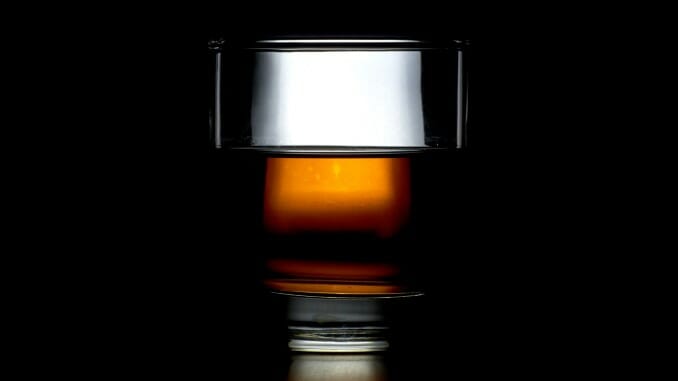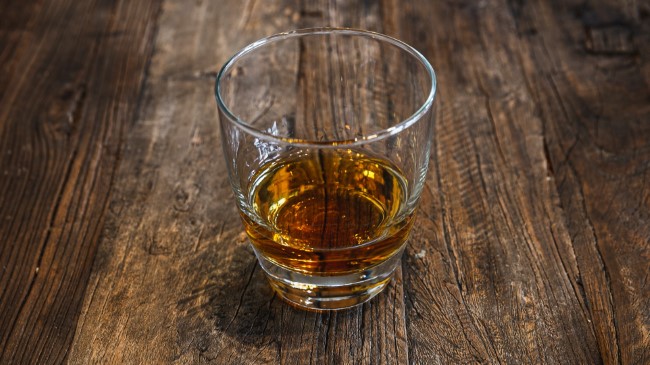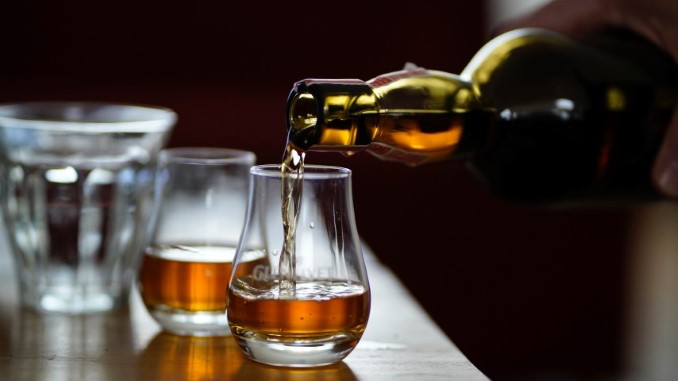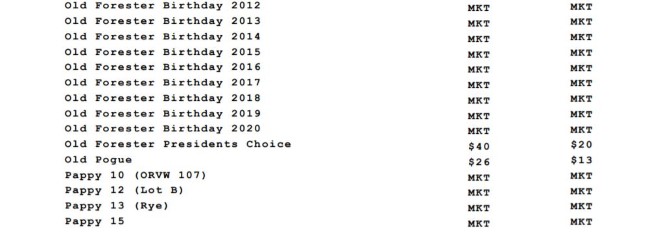Please, Don’t Fall For “Market Price” Bourbon at the Whiskey Bar
Photos via Unsplash, Mathew Schwartz, Dylan de Jonge, Phil Cruz, Rick Barrett Drink Features whiskey
Just about any consumer who buys whiskey regularly should likely be able to tell you that pricing for brown spirits has gotten a little out of control in the last few years. Ask a more dedicated bourbon geek about the phenomenon, though, and they’ll let you know in no uncertain terms just how off-the-rails this corner of the spirits world has become. As overzealous and newly minted bourbon geeks have flooded the scene, desperate to collect any bottle that the groupthink anoints as worthy of hype, they’ve normalized ridiculous, predatory pricing that has quickly migrated from the “secondary market” to the primary market. As we’ve previously chronicled in depth, package stores have increasingly taken to gouging whiskey drinkers by simply rationalizing that if someone is going to make hundreds of dollars in profit per bottle, it might as well be them rather than a customer who stood in line to buy something they could then flip online. There’s an assumption in place that no price is too high; cynical confidence that a desperate whiskey geek will eventually come along and pay it, and to date, the price gougers have rarely been wrong.
Whiskey bars, unsurprisingly, have likewise used bourbon mania to boost their profit margins by setting outlandishly high prices for an ounce or two of liquor, presented to the drinker with the pomp and circumstance of a shot glass of liquid gold. But even with prices soaring, trying a dram of rare bourbon at the bar is still often the most realistically attainable and affordable way for many whiskey geeks to experience a highly sought-after brand. Certainly, it’s easier to find a way to sample, say, the Buffalo Trace Antique Collection at a whiskey bar than it is to find an actual bottle of William Larue Weller in the wild, which usually requires either winning a lottery or conducting some kind of back room deal with a friendly sales clerk. The absurdly high prices for an ounce or two of that kind of bourbon at the bar can be forgiven by many drinkers, so excited are they to finally lay hands on a rarity. Spending a stupid amount of money has simply become part of the expectation, as damaging as that continues to be for the the whiskey world.
 That’ll be $125, please.
That’ll be $125, please.
What I truly can’t abide, and whiskey fans shouldn’t dare to normalize, however, is the idea of “market price” bourbon at a whiskey bar. I mean that in the most literal sense possible: Whiskey menus that don’t even dare to list their prices, and instead list “MP” or “market price” next to the likes of Pappy Van Winkle, George T. Stagg, Old Fitzgerald or Old Forester Birthday Bourbon. It’s something I’ve seen with increasing regularity in 2021, and it’s simply bad for the consumer on every level one can rationalize—not least because it fundamentally misrepresents the nature of how bourbon should be priced. Worse, it may even imply that the bar is acquiring its rare bottles by less-than-legal means, directly from the secondary market.
Why “Market Price” Whiskey?
Americans are familiar with the idea of occasionally seeing “market price” on a menu, at least if they frequent fine dining or haute cuisine establishments. In particular, we often expect to see “MP” next to expensive preparations of fresh seafood at upscale restaurants—it’s a staple of menus that feature such dishes as lobster, crab or fresh-caught whole fish. But why is this? Why is market price standard within this one corner of the culinary world, but egregious to apply toward something like whiskey?
The reason has to do with scarcity, and how that affects the cost of a restaurant acquiring its ingredients. Lobsters and crabs, for instance, are generally wild caught rather than farmed, as lobster/crab farming is difficult and not particularly profitable. Unlike, say, the beef industry, in which the flow of steers can easily be mapped and projected, ensuring a very steady supply (and therefore steady-ish costs for the restaurant), one never truly knows how many lobsters or crabs will be caught, and how quickly that number will be able to rise and fall with consumer demand for seafood. Therefore, the price for lobster and crab fluctuates pretty dramatically over short time frames—it can simply cost restaurants far more to acquire their usual lobster order one week than it does the next. Thus, the price of a lobster dish may rise and fall on a weekly or even daily basis, to keep in line with cost. That’s “market price.”
The availability of whiskey, on the other hand, really isn’t subject to these kinds of rapid fluctuations. Yes, some brands may be difficult for a bar program to acquire, but if they’re able to buy a product, they’ll be getting it for more or less the same price each time, unless a permanent change is made. Why? Because they’re buying from a liquor distributorship with set prices, in official price books that are often publicly available. A distributorship doesn’t charge a bar $25 for a bottle of bourbon one week, and then $50 for that same bottle the next. This allows the bar to set relatively stable prices on drinks in most scenarios, rather than prices that rise and fall on a weekly basis. And because the three-tier system of alcohol sales in the U.S. mandates that bars must buy all their alcohol through various distributorships, it is reasonable for consumers to expect prices to remain steady, unless some major event happens that affects the whiskey industry’s ability to produce its product.
 There’s no good reason for the price of a dram to fluctuate wildly.
There’s no good reason for the price of a dram to fluctuate wildly.
On the most basic level, this shoots a hole in the idea of “market price” bourbon, because bars can’t reasonably rationalize why such a product would need to be market priced. If the distributorship charges one flat rate for however many bottles of George T. Stagg you’re able to buy each fall—a release that only happens once a year, which makes “market price” even more dubious—then there’s no inherent reason for why the price you’re charging for that dram should ever really change, much less change frequently. It begs the question: Why would these prices be changing on a regular basis?
And unfortunately, there’s one obvious answer to that question: Because a lot of bars are presumably acquiring whiskey in other ways than via their distributors. As in, they appear to be buying bottles directly from collectors on the secondary market, and it’s this unpredictability in cost that drives the need to then sell the whiskey at “market price.” As it turns out, the “market” we’ve been talking about this whole time is the secondary market … and it shouldn’t surprise you to learn that buying bottles directly from consumers like this (and then reselling their contents) is pretty damn illegal.
Still, that’s not stopping bars that want to be known for their selection of rare bourbon, and given the prices they can get away with charging per oz in a bar setting, you can hardly blame them. Industry publications such as Whisky Advocate have explored this phenomenon with in-depth pieces on the bourbon black market, with author Sean Evans concluding the following:
This misses the point that many bars also acquire rare whiskeys through illegal back channels. Michael V. owns a Baltimore restaurant and has been collecting bourbon for years. The bulk of the rare offerings on his menu were purchased from secondary-market groups because “my distributor is garbage,” says Michael. “Instead of Mr. Van Winkle mouthing off about the market, how about he fixes the distributor issues and talks to whoever in his distillery is allocating those bottles?”
But even beyond the fact that “market price” bourbon at the whiskey bar is indefensible from a business standpoint, as well as implying the possibility of shady dealings in how a bar acquired that whiskey, it’s also simply bad from the standpoint of the consumer experience. What drinker wants to see “MP” next to something sought after when they’re browsing a menu? What consumer wants to have to ask a bartender individually about the prices of a half dozen different drams of whiskey? Why make the customer feel like a cheapskate for wanting to know how much something costs before they buy it? And moreover, why create extra, annoying work for the bartender who now has to field dozens of queries on “how much is Pappy 12?” each and every day they’re on the job? Market priced whiskeys are inconvenient for the people on both sides of the bar.
 Liquid gold.
Liquid gold.
Perhaps worse is the fact that market price for rare pours sets up the threat or suspicion of a double standard for the customer. How is a drinker to know, exactly, that the “market price” of a dram of Pappy is indeed whatever the bartender cites out of thin air on any given day? How can the drinker feel confident that the bartender isn’t simply sizing them up and deciding on the highest possible price they think you’re willing to pay? How do we know that the price is the same for everyone? If one of the bartender’s or owner’s friends comes in and orders the same pour later in the night, how do you know that the “market price” is the same for them as it is for you? Again, the consumer experience suffers.
A “Market Price” Whiskey Case Study
Bars charging market price for drams of sought-after whiskey is something I’ve seen increasingly often, particularly in the last two years, but it can be difficult to find specific instances online. Most of the bars I’ve seen featuring market price bourbon wisely don’t have their full whiskey menus uploaded online, likely cognizant of the fact that whiskey geeks might eventually notice and complain to them about the practice. If you look closely, though, you can find the occasional whiskey menu highlighting this practice.
A typical example would be the whiskey menu at Louisville, Kentucky’s Doc Crow’s, a longtime restaurant and whiskey bar in the heart of the bustling, distillery rich Whiskey Row. They can boast a very long, impressive menu of American whiskey, but if you scroll to the bottom, you eventually end up with what we all came to see: Rows of “MKT” pricing for two major, sought-after brands in the form of Old Forester Birthday Bourbon and Pappy van Winkle. The OFBB in particular is available in vintage years stretching back all the way to 2012, which makes me plenty curious about that particular pricing. For the consumer, however, you’re presumably expected to just come in and ask about each dram individually—a system that we’ve already explained isn’t to the benefit of anyone.
By way of comparison, contrast this with the famed Washington D.C. whiskey bar Jack Rose Dining Saloon, which also posts the entirety of its extensive whiskey menu online. At the Jack Rose, however, they don’t shy away from letting you know exactly what kinds of absurd prices they’re charging for the likes of Old Forester Birthday Bourbon ($45-65 for 1 oz) or Pappy Van Winkle ($135-325 for 1 oz). Indeed, there are no MKT’s to be seen here—just an assurance that you’d better enter the bar with an overflowing money clip if you plan on buying anything. Is this ideal? I don’t think anyone would describe those prices as such, but least it’s all out in the open for the world to see.
It begs the question, how do the prices at a place like Doc Crow’s compare to those at Jack Rose? Is Doc Crow’s somehow even more expensive, and they feel that “MKT” shields them from potential criticism of those looking at the menu and feeling sticker shock? Or are the prices comparable, and Doc Crow’s just wants to retain the right to change those prices whenever they feel like it? How much does one have to charge, if I would have liked to include the bar’s perspective here, but I didn’t receive a reply when making inquiries to the manager of the bar’s whiskey program. If I’m ever in Louisville, perhaps I’ll ask about it face to face.
In the meantime, I sincerely hope that the trend of “market price” bourbon in whiskey bars remains a rare occurrence, but it’s difficult to be optimistic when the rampant hype for nearly any limited release whiskey continues unabated, and drinkers are willing to pay anything that is demanded of them. As is almost always the case when it comes to stories tangential to whiskey pricing, it is ultimately the consumers who carry the responsibility to reject these types of practices by simply choosing not to participate. Until we learn not to fall for this kind of potentially predatory pricing, we simply invite more of it. And so, I’ll simply ask you again: Please, don’t fall for “market price” bourbon at the whiskey bar—or at the package store, for that matter. If we don’t want the whiskey secondary market to become the only market, then at some point we all simply have to say “no thanks.” As I wrote when previously discussing retailer price gouging:
The one group that does possess true control in this situation is the consumer, and this entire system is predicated upon the idea that we’re all so desperate for the latest hyped bottles that we’ll pay any absurd amount for them. What conclusion can you draw, other than the fact that we have to stop enabling the system that is increasingly taking advantage of us?
Jim Vorel is a Paste staff writer and resident liquor geek. You can follow him on Twitter for more drink writing.
